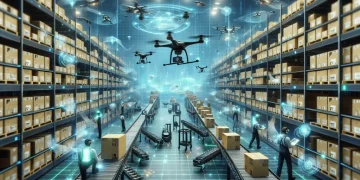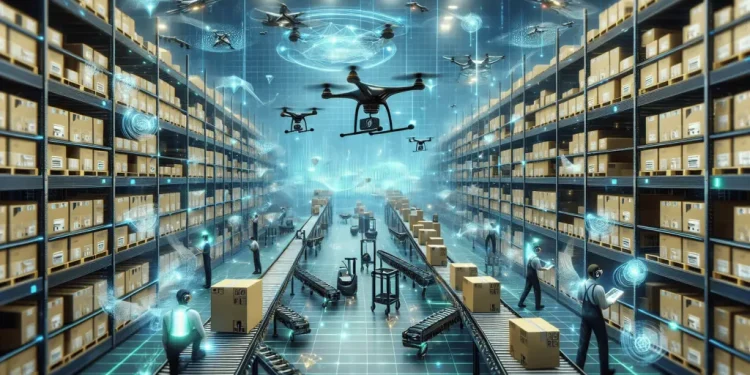By Maria Kalamatas | July 2, 2025
SINGAPORE — In a warehouse just outside Kuala Lumpur, an orange cart glides silently between shelves, lifting bins, scanning barcodes, and weaving past human workers without pause. It doesn’t look extraordinary — until you realize there’s no remote control. The robot is working alone, guided only by an algorithm trained on weeks of real-world movement patterns.
Across Asia, Europe, and North America, scenes like this are becoming the new normal.
“What’s changed is not just the speed,” said Maya Del Rosario, who oversees operations at a logistics hub in Singapore. “It’s that these systems can now think — they adapt, they react, and they learn fast.”
Machines With a Mind of Their Own
Recent industry figures confirm the trend. A study published yesterday by LogiTech Insights shows a 27% jump in AI-based automation deployment in warehouses worldwide, with adoption growing fastest in China, Germany, and the U.S..
Unlike previous generations of warehouse bots, today’s models aren’t just executing tasks — they’re making decisions.
When a high-priority shipment hits the system, the bots reroute traffic, adjust their priorities, and even reassign work zones — all without human intervention.
“We’ve entered a phase where machine logic is driving physical flow,” said Thomas Leclerc, an automation consultant based in Lyon. “This goes far beyond cost-cutting. It’s about agility.”
Real Benefits, Real Limits
At FlashDepot Singapore, mobile robots now handle 65% of the company’s order picking. They work alongside human staff who handle exceptions, customer-specific packaging, and inventory checks.
Fueling this shift is not just labor scarcity, but also increasing demand for 24-hour order cycles, particularly in B2B e-commerce and pharma logistics.
Still, experts caution against imagining a fully autonomous warehouse.
“Machines are getting smarter, but they’re not infallible,” Leclerc added. “We still need people — just not for the same repetitive tasks.”
A Cultural Shift, Not Just a Technical One
What many executives are discovering is that automation isn’t just a tech upgrade — it’s a rethink of how warehouses function.
In older facilities, managers are redesigning layout patterns to suit robotic movement. In newer ones, teams are being trained to manage software rather than stock.
And for companies still hesitant?
“Start small,” Del Rosario said. “One lane. One task. Then let the results speak for themselves.”























